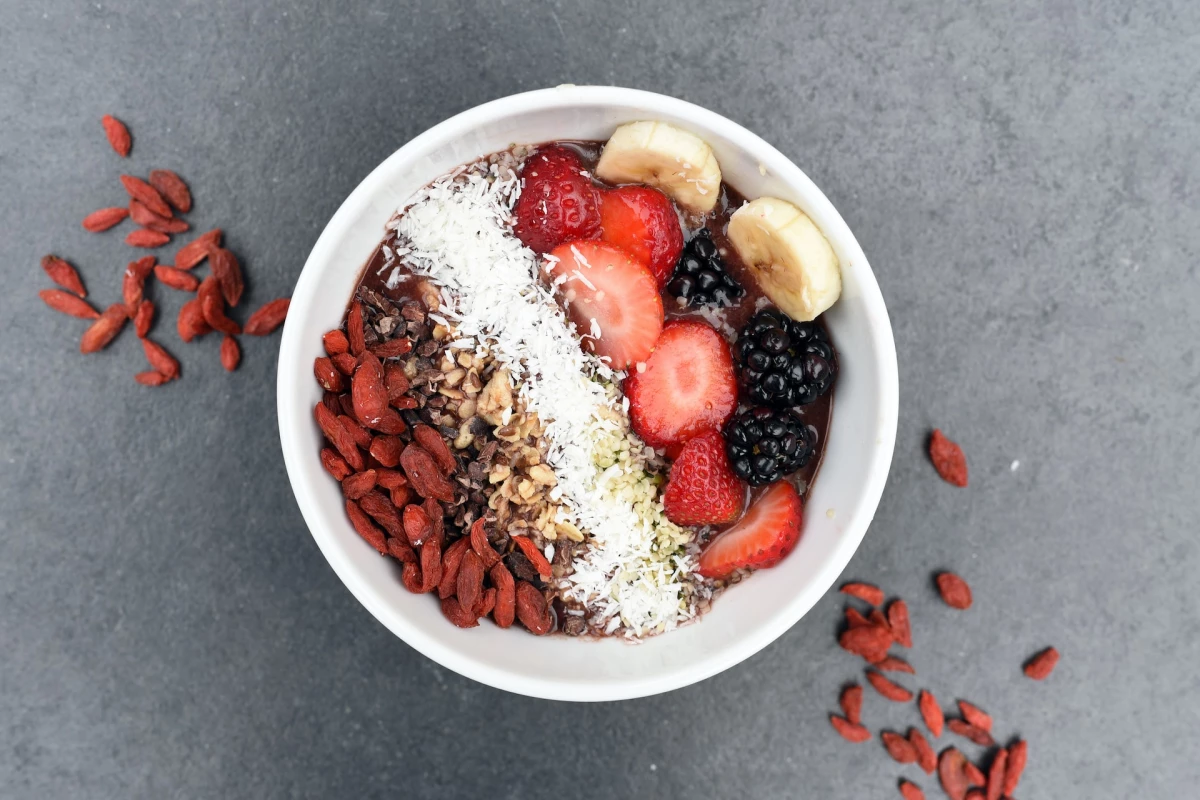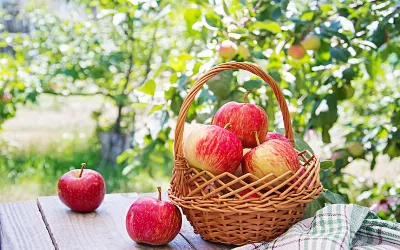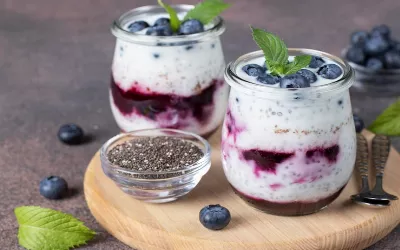Top 15 Superfoods for Optimal Health and Fitness
Discover the ultimate power-packed roster of nature's finest offerings with our list of the Top 15 Superfoods for Optimal Health and Fitness. These extraordinary edibles aren't just your run-of-the-mill ingredients; they are the secret weapons to unlock your peak well-being and vitality. Each of these superfoods is like a tiny treasure chest, bursting with nutrients, flavor, and the potential to transform your life.

1.Benefits of Leafy Greens:
Leafy greens are nutritional powerhouses that offer a plethora of benefits for your health and fitness journey:
- Rich in Nutrients: Leafy greens are loaded with essential vitamins and minerals such as vitamin A, vitamin C, vitamin K, folate, and iron. These nutrients play vital roles in maintaining overall health.
- Low in Calories: Leafy greens are low in calories and high in fiber, making them an excellent choice for weight management and satiety.
- Antioxidant Powerhouses: They are packed with antioxidants like lutein and zeaxanthin, which protect your eyes from age-related conditions and reduce the risk of chronic diseases.
- Heart Health: The high levels of potassium in leafy greens can help regulate blood pressure, reducing the risk of heart disease.
- Anti-Inflammatory: The phytonutrients in leafy greens have anti-inflammatory properties, which can help reduce the risk of chronic diseases associated with inflammation.
- Bone Health: Rich in vitamin K and calcium, leafy greens support bone health and reduce the risk of osteoporosis.
- Digestive Health: The fiber in leafy greens aids digestion and supports a healthy gut microbiome.
Let's take a closer look at three popular leafy greens:
- Kale: Kale is a nutritional powerhouse that's high in vitamins A, C, and K. It's also rich in antioxidants and offers anti-inflammatory benefits. Incorporate it into salads, smoothies, or as crispy kale chips.
- Spinach: Spinach is a versatile leafy green loaded with iron and folate. Use it in salads, omelets, sandwiches, or as a base for green smoothies.
- Swiss Chard: Swiss chard is rich in vitamin K and provides a slightly earthy flavor. Try sautéing it with garlic and olive oil or adding it to soups and stir-fries.
How to Incorporate Them into Your Diet:
Now, let's explore some creative ways to include leafy greens in your daily meals:
- Smoothies: Blend kale or spinach into your morning smoothie for an extra nutrient boost. You won't even taste it!
- Salads: Create vibrant salads with a mix of leafy greens, colorful veggies, and a delicious dressing. Add nuts, seeds, or grilled chicken for protein.
- Stir-Fries: Toss Swiss chard or spinach into your stir-fries for added flavor and nutrition. They cook quickly and pair well with various ingredients.
- Soups: Incorporate chopped kale or spinach into soups and stews. They'll wilt down and infuse your dish with goodness.
- Snacks: Make kale chips by seasoning kale leaves with olive oil and your favorite spices, then baking until crispy.
2.Berries:
One of the key reasons why berries have earned their superfood status is their exceptional antioxidant content. Antioxidants are like the body's own superheroes, fighting off harmful molecules called free radicals. These free radicals can cause cellular damage and contribute to various health issues, including aging, inflammation, and chronic diseases.
Berries, with their vibrant colors, are rich in antioxidants like flavonoids, polyphenols, and vitamins C and E. These compounds work together to neutralize free radicals and protect your cells from oxidative stress. This not only helps slow down the aging process but also lowers the risk of diseases such as heart disease and cancer.
Blueberries: These tiny, deep-blue gems are often hailed as the king of berries. They are bursting with antioxidants, particularly anthocyanins, which have been linked to improved brain function and reduced oxidative stress. Blueberries are also rich in fiber and vitamin C, making them a fantastic choice for overall health.
Strawberries: With their sweet, juicy flavor and high vitamin C content, strawberries are a favorite among berry enthusiasts. They are known for their anti-inflammatory properties and may help reduce the risk of chronic diseases like heart disease and diabetes. Plus, they are a great source of folate, which is essential for cell division and growth.
Acai Berries: These small, dark purple berries from the Amazon rainforest have gained immense popularity in recent years. Acai berries are incredibly rich in antioxidants and are known for their potential to boost energy levels and support weight loss. They are also loaded with healthy fats, fiber, and essential minerals.
Creative Ways to Enjoy Berries
- Smoothie Sensation: Blend a handful of your favorite berries with Greek yogurt, a banana, and a drizzle of honey for a refreshing and nutritious smoothie. You can also add spinach or kale for an extra nutritional punch.
- Berry Parfait: Layer Greek yogurt, granola, and mixed berries in a glass for a delightful parfait. This makes for a satisfying and visually appealing breakfast or snack.
- Berry-Topped Oatmeal: Spruce up your morning oatmeal with a generous serving of fresh berries. The combination of fiber from oats and antioxidants from berries is a fantastic way to kickstart your day.
- Berry Salad: Mix strawberries, blueberries, and a few mint leaves for a colorful fruit salad. Drizzle some balsamic glaze for an unexpected twist of flavor.
- Frozen Delights: Freeze berries for a cool, guilt-free treat. They make for an excellent alternative to sugary popsicles, and their natural sweetness shines through when frozen.
3.Fatty Fish:
Omega-3 Fatty Acids and Their Health Benefits
Omega-3 fatty acids are a type of polyunsaturated fat that has gained immense popularity in recent years due to their remarkable health benefits. These essential fats are called "omega-3" because they have a double bond three carbon atoms from the end of the carbon chain. Omega-3 fatty acids are classified into three types:
- ALA (Alpha-Linolenic Acid): Found in plant-based sources like flaxseeds and walnuts.
- EPA (Eicosapentaenoic Acid): Primarily found in marine sources, especially fatty fish.
- DHA (Docosahexaenoic Acid): Also found in fatty fish, DHA is crucial for brain health.
The health benefits of omega-3 fatty acids are extensive and include:
Heart Health: Omega-3 fatty acids may lower the risk of heart disease by lowering triglycerides, increasing cholesterol levels, and lowering blood pressure..
Brain Function: DHA is essential for brain development in infants and supports cognitive function in adults.
Inflammation: Omega-3s have anti-inflammatory properties, potentially reducing the risk of chronic diseases like arthritis.
Mood and Mental Health: According to several research, omega-3 fatty acids may help reduce the signs and symptoms of anxiety and depression.
When it comes to incorporating omega-3 fatty acids into your diet, fatty fish are some of the best sources. Here are three examples of fatty fish rich in omega-3s:
- Salmon: Salmon is a nutritional powerhouse, packed with high-quality protein, omega-3s, vitamins, and minerals. Wild-caught salmon is often considered the best choice due to its lower mercury content and higher omega-3 levels.
- Mackerel: Mackerel is another oily fish that's exceptionally rich in omega-3 fatty acids. It has a robust flavor and pairs well with various seasonings.
- Trout: Trout is a freshwater fish that also provides a healthy dose of omega-3s. It's a versatile fish that can be grilled, baked, or pan-fried.
Preparing and Cooking Fish for Optimal Nutrition
To maximize the nutritional benefits of fatty fish, it's essential to prepare and cook them correctly:
- Grilling: Grilling fish can impart a smoky flavor while preserving its natural oils. Brush the fish with olive oil, season it with herbs and spices, and grill until it flakes easily with a fork.
- Baking: Baking fish in the oven is a healthy and easy cooking method. Drizzle with olive oil, season, and bake at 350°F (175°C) until done.
- Pan-Frying: If you prefer a crispy texture, pan-frying is an option. Use a small amount of healthy oil like olive or avocado oil and cook the fish until it's golden brown.
- Steaming: Steaming is a gentle method that retains most of the fish's nutrients. Place the fish in a steamer basket, season, and steam until it's opaque and flakes easily.
4.Nuts and Seeds:
Nutrient-Rich Profile of Nuts and Seeds
Nuts and seeds are nutritional goldmines, providing an array of vitamins, minerals, healthy fats, and antioxidants. Here's a glimpse into what makes them stand out:
- Healthy Fats: Nuts and seeds are abundant in healthy fats, including monounsaturated and polyunsaturated fats. These fats are essential for maintaining heart health and providing a sustainable source of energy.
- Protein Powerhouses: If you're looking to boost your protein intake, nuts and seeds are a fantastic choice. They're particularly valuable for vegetarians and vegans, offering plant-based protein that aids muscle repair and growth.
- Fiber-Rich: Fiber is crucial for digestive health and satiety. Nuts and seeds are brimming with dietary fiber, promoting regular bowel movements and keeping you feeling full longer.
- Fiber-Rich: Fiber is crucial for digestive health and satiety. Nuts and seeds are brimming with dietary fiber, promoting regular bowel movements and keeping you feeling full longer.
- Antioxidant Properties: Many nuts and seeds are rich in antioxidants, which help combat oxidative stress and inflammation, reducing the risk of chronic diseases.
- Fiber-Rich: Fiber is crucial for digestive health and satiety. Nuts and seeds are brimming with dietary fiber, promoting regular bowel movements and keeping you feeling full longer.
Some Popular Nuts
- Almonds: Almonds are a popular nut known for their heart-healthy benefits. They're a fantastic source of vitamin E, which acts as a potent antioxidant, protecting your cells from damage. Almonds are also rich in magnesium, a mineral crucial for muscle and nerve function.
- Chia Seeds: Chia seeds are tiny nutritional powerhouses, packed with omega-3 fatty acids, fiber, and protein. They absorb liquid and swell, making them a great addition to smoothies, yogurt, or oatmeal. The soluble fiber in chia seeds helps regulate blood sugar levels and keeps you feeling full.
- Flaxseeds: Flaxseeds are another omega-3-rich seed that supports heart health. They're also an excellent source of lignans, a type of plant compound with antioxidant properties. Grinding flaxseeds enhances nutrient absorption, making them a versatile addition to your diet.
Nut and Seed-Based Recipes
Now, let's get creative with some delicious nut and seed-based recipes that will make incorporating these superfoods into your diet a breeze:
1. Almond and Berry Smoothie
Ingredients:
- 1 cup almond milk
- 1/4 cup almonds
- 1/2 cup mixed berries (strawberries, blueberries, raspberries)
- 1 banana
- 1 tablespoon honey (optional)
- Ice cubes
Instructions:
Blend all the ingredients until smooth and enjoy a nutrient-packed almond and berry smoothie.
2. Chia Pudding
Ingredients:
- 2 tablespoons chia seeds
- 1 cup almond milk
- 1/2 teaspoon vanilla extract
- 1 tablespoon maple syrup
- Fresh fruit for topping (e.g., sliced strawberries, kiwi)
Instructions:
Mix chia seeds, almond milk, vanilla extract, and maple syrup in a jar. Stir well, cover, and refrigerate overnight. Top with fresh fruit before serving.
3. Flaxseed Energy Bites
Ingredients:
- 1 cup rolled oats
- 1/2 cup ground flaxseed
- 1/2 cup almond butter
- 1/3 cup honey
- 1/2 cup dark chocolate chips
- 1 teaspoon vanilla extract
Instructions:
Mix all the ingredients in a bowl. Form the mixture into bite-sized balls and refrigerate until firm. Enjoy as a healthy snack!
Incorporating nuts and seeds into your daily diet can have a profound impact on your health and fitness journey. These superfoods not only provide essential nutrients but also add a delightful crunch and flavor to your meals and snacks. So go ahead, embrace the power of nuts and seeds, and let them fuel your path towards optimal health and fitness.
5.Whole Grains:
Importance of Whole Grains in a Balanced Diet: Whole grains are an essential component of a balanced diet for several reasons:
- Nutrient-Rich: Whole grains are rich in essential nutrients such as fiber, vitamins, minerals, and antioxidants. These nutrients support overall health and well-being.
- Steady Energy: Whole grains provide a slow and steady release of energy due to their complex carbohydrates. This helps maintain stable blood sugar levels, keeping you energized throughout the day and during workouts.
- Digestive Health: The high fiber content in whole grains aids digestion and promotes a healthy gut. This can lead to better nutrient absorption and a reduced risk of digestive issues.
- Weight Management: Including whole grains in your diet can help you feel full and satisfied, reducing the likelihood of overeating and supporting weight management.
Now, let's take a closer look at some popular whole grains to incorporate into your diet:
- Quinoa: A complete protein source, quinoa is a versatile grain that's also gluten-free. It's rich in fiber, iron, magnesium, and various vitamins.
- Oats: Oats are a fantastic source of soluble fiber, which can help lower cholesterol levels. They are also a good source of protein and various vitamins and minerals.
- Brown Rice: Unlike white rice, brown rice retains its bran and germ layers, making it a nutritious choice. It's an excellent source of fiber, B vitamins, and minerals like selenium and manganese.
- Whole Wheat: Whole wheat products like whole wheat bread, pasta, and couscous are easily accessible and packed with nutrients, including fiber and protein.
- Barley: Barley is high in dietary fiber, particularly beta-glucans, which are known for their heart-healthy benefits. It's also a good source of vitamins and minerals.
Cooking and Meal Ideas with Whole Grains:
Incorporating whole grains into your meals can be both delicious and satisfying. Here are some creative cooking and meal ideas:
- Quinoa Salad: Create a refreshing quinoa salad with your favorite vegetables, herbs, and a zesty dressing. Add grilled chicken or tofu for extra protein.
- Oatmeal: Start your day with a hearty bowl of oatmeal topped with fresh fruits, nuts, and a drizzle of honey for a nutritious breakfast.
- Brown Rice Bowls: Build colorful rice bowls with brown rice, lean protein (e.g., grilled salmon or tofu), and a variety of roasted or sautéed vegetables.
- Whole Wheat Pizza: Make a homemade whole wheat pizza crust and load it with your favorite healthy toppings for a guilt-free indulgence.
- Barley Risotto: Swap Arborio rice with barley in your risotto recipes for a nutty and nutritious twist.
6.Legumes:
Protein and Fiber Content in Legumes
- Protein Powerhouse: Legumes are a fantastic source of plant-based protein, making them a cornerstone of many vegetarian and vegan diets. This protein is essential for muscle repair and growth, making it an excellent choice for fitness enthusiasts.
- Fiber-Filled: Legumes are equally renowned for their high fiber content. Fiber aids digestion, promotes a feeling of fullness, and stabilizes blood sugar levels. This can be particularly advantageous for those looking to manage their weight and optimize their overall health.
Now, let's take a closer look at some popular Legumes:
- Chickpeas: These tiny legumes pack a powerful nutritional punch. Loaded with protein, fiber, vitamins, and minerals, chickpeas are versatile and can be used in a myriad of dishes, from hearty stews to crunchy roasted snacks.
- Lentils: Red, green, or brown, lentils are a nutritional powerhouse. They're rich in protein, iron, and folate, making them an excellent choice for maintaining energy levels and supporting cardiovascular health.
- Black Beans: Black beans are not only delicious but also incredibly nutritious. Packed with protein, fiber, antioxidants, and various vitamins and minerals, they're a must-have for any health-conscious individual.
Vegetarian and Vegan Options with Legumes
- Hummus: A creamy dip made from chickpeas, tahini, and various flavorful ingredients. Use it as a dip for veggies or as a spread in sandwiches.
- Lentil Soup: A comforting bowl of lentil soup is a perfect way to load up on fiber and protein while enjoying a warm, hearty meal.
- Black Bean Tacos: Swap out meat for black beans in your tacos for a protein-packed, plant-based twist on this beloved dish.
- Chickpea Salad: Create a refreshing salad with chickpeas, mixed vegetables, olive oil, lemon juice, and your favorite herbs and spices.
- Veggie Burger: Make a satisfying veggie burger using a black bean or lentil base, topped with your favorite condiments and veggies.
7.Greek Yogurt:
Probiotic Benefits of Greek Yogurt:
Greek yogurt is not your average yogurt; it's a powerhouse of probiotics. Probiotics are live beneficial bacteria that promote a healthy gut microbiome. Greek yogurt is made by straining regular yogurt to remove excess whey, resulting in a thicker and creamier texture. This straining process also concentrates the probiotics, making Greek yogurt a potent source of these beneficial microorganisms.
The benefits of probiotics found in Greek yogurt include:
- Improved Digestion: Probiotics help maintain a balanced gut flora, reducing digestive issues like bloating, constipation, and diarrhea.
- Enhanced Immune Function: A healthy gut supports a robust immune system, helping your body fight off infections and illnesses.
- Weight Management: Some studies suggest that probiotics in Greek yogurt may aid in weight loss and weight management by promoting a feeling of fullness.
Incorporating Greek Yogurt into Your Daily Meals: Now that we've established the incredible probiotic benefits of Greek yogurt, let's explore how to make it a part of your daily meals:
1.Breakfast Boost:
- Top your morning cereal or oatmeal with a dollop of Greek yogurt for added creaminess and a protein kick.
- Blend Greek yogurt into your breakfast smoothie for a thicker, more satisfying texture.
2.Snack Time:
- Mix Greek yogurt with honey and a sprinkle of nuts or fresh berries for a delicious and nutritious snack.
- Use Greek yogurt as a dip for vegetable sticks or whole-grain crackers.
3.Lunch and Dinner:
- Greek yogurt makes a fantastic base for salad dressings, creating a creamy and tangy flavor.
- Use it as a healthier alternative to sour cream in your favorite recipes, like tacos, baked potatoes, or chili.
4.Dessert Delights:
- Create guilt-free desserts by substituting Greek yogurt for heavy cream or cream cheese in recipes like cheesecake or ice cream.
- Add a dollop of Greek yogurt to your fruit salad for a delightful twist.
Alternatives for Dairy-Free Diets: While Greek yogurt offers numerous benefits, it may not be suitable for everyone, especially those following dairy-free diets. Fortunately, there are excellent alternatives to Greek yogurt that can provide similar benefits:
Coconut Yogurt: Made from coconut milk, coconut yogurt is a creamy and dairy-free alternative rich in probiotics.
- Almond Yogurt: Almond yogurt is made from almond milk and is a great source of probiotics for those with dairy allergies or lactose intolerance.
- Soy Yogurt: Soy yogurt is another dairy-free option that contains probiotics and provides a protein boost.
8.Avocado:
Healthy Fats and Nutrients in Avocados:
Avocado, often referred to as "nature's butter," is a superfood that deserves a prominent place in your diet. It's renowned for its rich content of healthy fats, primarily monounsaturated fats, which are heart-healthy and can aid in weight management. Additionally, avocados are loaded with essential nutrients such as:
- Fiber: Avocados are a great source of dietary fiber, promoting digestive health and helping you feel full for longer periods, which can be beneficial for weight control.
- Potassium: They contain even more potassium than bananas, which is crucial for maintaining healthy blood pressure levels and preventing muscle cramps.
- Vitamins: Avocados are a treasure trove of vitamins, including vitamin K, vitamin E, vitamin C, and various B vitamins, which support overall health, skin, and immune function.
- Folate: This B-vitamin is especially important for pregnant women as it aids in fetal development, but it's beneficial for everyone as it supports cell division and tissue growth.
- Antioxidants: Avocados are rich in antioxidants like lutein and zeaxanthin, which are beneficial for eye health and may reduce the risk of age-related eye diseases.
Avocado-Based Recipes and Snacks:
Incorporating avocados into your diet can be a delightful culinary experience. Here are some delicious avocado-based recipes and snacks:
- Guacamole: A classic favorite, guacamole is a versatile dip that pairs well with tortilla chips, tacos, or as a topping for grilled chicken or burgers.
- Avocado Smoothie: Blend avocado with Greek yogurt, honey, and your favorite fruits for a creamy and nutritious smoothie.
- Avocado Salad: Toss avocado chunks with mixed greens, cherry tomatoes, and a drizzle of olive oil for a refreshing salad.
- Avocado and Egg Breakfast: Top a slice of whole-grain toast with mashed avocado and a poached egg for a hearty and protein-packed breakfast.
- Avocado Sushi: Create homemade sushi rolls with avocado, cucumber, and your choice of protein for a satisfying and healthy meal.
Avocado Toast and Beyond:
Avocado toast is a popular and trendy way to enjoy avocados, but don't limit yourself to this simple preparation. Avocado can be used in a multitude of dishes, including sandwiches, wraps, and even desserts.
- Avocado Tacos: Swap out traditional taco fillings with sliced avocado for a creamy and nutritious twist.
- Avocado Chocolate Mousse: Blend avocado with cocoa powder and sweetener for a guilt-free chocolate mousse dessert.
- Avocado and Turkey Wrap: Spread mashed avocado on a whole-wheat wrap and fill it with turkey, vegetables, and your favorite condiments.
- Avocado Popsicles: Puree avocado with coconut milk and honey, then freeze it in popsicle molds for a cool and healthy treat.
9.Tomatoes:
Nutritional Value of Tomatoes:
Tomatoes, often mistaken as vegetables, are technically fruits and have been a staple in cuisines worldwide for centuries. Here's a breakdown of their nutritional value:
- Rich in Vitamins and Minerals: Tomatoes are a fantastic source of vitamins A, C, and K. These vitamins play crucial roles in maintaining healthy skin, boosting the immune system, and aiding blood clotting.
- Low in Calories: Tomatoes are a low-calorie food, making them an excellent addition to weight-conscious diets. One medium-sized tomato contains just around 22 calories.
- Fiber: They are a good source of dietary fiber, aiding digestion and promoting a feeling of fullness.
- Potassium: Tomatoes contain potassium, which helps maintain proper blood pressure levels and heart health.
- Antioxidants: Apart from lycopene, tomatoes also contain other antioxidants like beta-carotene and quercetin, which combat free radicals in the body and reduce the risk of chronic diseases.
Cooking with Tomatoes and Homemade Sauces:
Tomatoes are incredibly versatile in the kitchen, and there are numerous ways to incorporate them into your meals:
- Fresh Salads: Add slices of ripe tomatoes to your salads for a burst of flavor and nutrients.
- Sauces: Create your own homemade tomato sauce for pasta, pizzas, or as a base for various dishes. To make a basic tomato sauce, sauté onions and garlic in olive oil, add fresh tomatoes, herbs, and let it simmer until it thickens. You can also blend it for a smoother texture.
- Salsas: Prepare a refreshing salsa with diced tomatoes, onions, cilantro, lime juice, and a touch of chili for a zesty kick.
- Grilled Tomatoes: Grilling tomatoes enhances their sweetness and can be served as a side dish or even in sandwiches.
- Tomato Soup: Whip up a comforting tomato soup by blending cooked tomatoes with broth and your choice of seasoning.
Benefits of Lycopene in Tomatoes:
Lycopene, the red pigment responsible for tomatoes' vibrant color, is a powerhouse antioxidant with several health benefits:
- Cancer Prevention: Lycopene has been linked to a reduced risk of certain types of cancer, particularly prostate cancer. Its antioxidant properties help protect cells from damage that can lead to cancer.
- Heart Health: Regular consumption of lycopene-rich foods, like tomatoes, can lower the risk of heart disease by reducing LDL cholesterol levels and improving blood vessel function.
- Skin Protection: Lycopene helps protect the skin from UV damage, reducing the risk of sunburn and premature aging.
- Eye Health: It may also contribute to better eye health and reduce the risk of age-related macular degeneration.
- Anti-Inflammatory: Lycopene exhibits anti-inflammatory properties, which can help alleviate symptoms of chronic inflammatory conditions.
10.Sweet Potatoes:
Fiber and Vitamins in Sweet Potatoes:
- Fiber-Rich Goodness: Sweet potatoes are a fantastic source of dietary fiber, which plays a crucial role in maintaining digestive health. A single sweet potato can provide you with a significant portion of your daily fiber needs.
- Vitamin A Powerhouse: These vibrant orange spuds are loaded with vitamin A in the form of beta-carotene. Vitamin A is essential for healthy skin, vision, and a strong immune system. Eating sweet potatoes regularly can help boost your daily intake of this vital nutrient.
Roasting and Creative Ways to Enjoy Sweet Potatoes:
- Perfectly Roasted: Roasting sweet potatoes is one of the simplest and most delicious ways to enjoy them. Simply chop them into bite-sized pieces, toss them with a bit of olive oil, salt, and your favorite seasonings, and roast in the oven until they are crispy on the outside and tender on the inside. This method enhances their natural sweetness and brings out their unique flavor.
- Sweet Potato Fries: Craving a healthier alternative to regular french fries? Slice sweet potatoes into thin strips, season, and bake until crispy. These homemade sweet potato fries are a tasty way to enjoy this superfood.
- Sweet Potato Mash: Boil sweet potatoes until they are soft, then mash them with a touch of butter and a sprinkle of cinnamon for a nutritious and comforting side dish.
- Stuffed Sweet Potatoes: Get creative by hollowing out a baked sweet potato and filling it with a variety of toppings like black beans, avocado, and salsa for a satisfying and nutritious meal.
Sweet Potato as a Healthy Alternative:
- Replacing Refined Carbs: Sweet potatoes can serve as a healthier alternative to refined carbohydrates like white rice and pasta. Swap out these empty-calorie options with sweet potato noodles or cauliflower sweet potato rice for a nutrient-dense, low-carb alternative.
- Snacking Made Healthy: Make sweet potato chips by thinly slicing sweet potatoes, seasoning with your choice of spices, and baking until crisp. These make for a crunchy and nutritious snack.
- Smoothie Boost: Add cooked sweet potato to your morning smoothie for an extra dose of vitamins, fiber, and a natural sweetener.
- Gluten-Free Baking: Sweet potato puree can replace some or all of the sugar and fat in baked goods, making them healthier and moist.
11.Broccoli:
Nutrients in Broccoli and Its Health Benefits:
Broccoli is often referred to as a "nutritional powerhouse" for a good reason. This cruciferous vegetable is packed with essential vitamins, minerals, and antioxidants that contribute to your overall health and fitness. Here are some of the key nutrients in broccoli and their associated health benefits:
- Vitamin C: Broccoli is rich in vitamin C, which boosts your immune system, promotes healthy skin, and aids in wound healing.
- Fiber: High in dietary fiber, broccoli aids in digestion, helps maintain a healthy weight, and supports heart health by reducing cholesterol levels.
- Vitamin K: Broccoli is an excellent source of vitamin K, crucial for bone health and blood clotting.
- Folate: Folate in broccoli is important for cell division and can help prevent birth defects during pregnancy.
- Calcium: Although not as high as dairy products, broccoli contains calcium, essential for bone health.
- Antioxidants: Broccoli is packed with antioxidants like sulforaphane, which have anti-inflammatory and potential cancer-fighting properties.
- Glucosinolates: These compounds in broccoli may help detoxify the body and reduce the risk of certain cancers.
Cooking and Serving Broccoli to Maximize Nutrition:
To reap the maximum health benefits from broccoli, it's crucial to cook and serve it properly. Here are some tips:
- Steaming: Steaming broccoli helps retain most of its nutrients. Aim for a bright green color and a slightly crisp texture when cooking.
- Avoid Overcooking: Overcooking broccoli can lead to nutrient loss. Cook it just until it's tender but still crisp.
- Pair with Healthy Fats: Combining broccoli with healthy fats like olive oil or avocado can enhance the absorption of fat-soluble vitamins.
- Raw Consumption: Eating broccoli raw in salads or as a crunchy snack preserves its nutrients, especially vitamin C.
- Try Roasting: Roasting broccoli with a touch of olive oil, garlic, and your favorite seasonings can bring out its natural sweetness.
Broccoli in Various Dishes:
Broccoli's versatility makes it a star ingredient in a wide range of dishes. Here are a few creative ways to incorporate broccoli into your meals:
- Stir-Fries: Add broccoli florets to stir-fries with other colorful vegetables and lean protein sources for a nutritious and tasty meal.
- Soups: Blend steamed broccoli into soups for a creamy texture and added nutrients.
- Casseroles: Broccoli can be a delightful addition to casseroles, providing both texture and nutrition.
- Salads: Include raw or blanched broccoli in salads for a satisfying crunch and a nutrient boost.
- Pasta Dishes: Toss steamed broccoli with whole-grain pasta, garlic, lemon, and Parmesan cheese for a delicious pasta dish.
12.Garlic:
Medicinal Properties of Garlic
Garlic, scientifically known as Allium sativum, has been revered for its medicinal properties for centuries. Its active compound, allicin, is responsible for many of its health benefits. Here are some key reasons why garlic is a true superfood:
- Heart Health: Garlic is renowned for its ability to lower blood pressure and cholesterol levels. It can reduce the risk of heart disease, the world's leading cause of death.
- Antioxidant Powerhouse: Garlic contains antioxidants that help combat oxidative damage caused by free radicals. This can reduce the risk of chronic diseases and slow down the aging process.
- Boosting Immunity: Garlic's immune-boosting properties can help your body fight off infections and illnesses. It's especially helpful during cold and flu seasons.
- Cancer Prevention: Some studies suggest that garlic consumption may reduce the risk of certain cancers, particularly those related to the digestive system.
- Anti-Inflammatory: Chronic inflammation is a root cause of many diseases. Garlic's anti-inflammatory properties can help mitigate this risk.
Using Garlic in Cooking and Its Health Implications
Now that we know about garlic's amazing health benefits, let's talk about how to incorporate it into your meals:
- Flavor Enhancer: Garlic adds a delightful, savory flavor to dishes. Use it minced or crushed to release its robust aroma and flavor.
- Versatile Ingredient: Garlic can be used in a wide range of cuisines, from Italian and Mediterranean to Asian and Mexican. It pairs well with meats, vegetables, and grains.
- Raw or Cooked: While some health benefits are preserved when garlic is consumed raw, cooking it also offers unique flavors and can make it easier to digest for some individuals.
- Roasting: Roasted garlic has a sweet, milder flavor and can be spread on bread, mixed into mashed potatoes, or added to sauces.
- Caution: Be mindful of garlic breath! Chewing parsley or using mouthwash can help combat this issue.
Garlic as a Natural Remedy
Apart from enhancing your dishes, garlic can also serve as a natural remedy for various common ailments:
- Sore Throat: Garlic's antibacterial properties can help soothe a sore throat. Mix minced garlic with honey and consume a teaspoon or two.
- Ear Infections: Garlic oil can be used as eardrops to alleviate earaches and mild infections.
- Acne: Applying crushed garlic on acne can help reduce inflammation and kill acne-causing bacteria.
- Mosquito Bites: Rubbing a garlic clove on mosquito bites can relieve itching and swelling.
- Fungal Infections: Garlic's antifungal properties can be used to combat athlete's foot and fungal nail infections.
13.Dark Chocolate:
Antioxidants in Dark Chocolate
Dark chocolate is renowned for its rich concentration of antioxidants, primarily flavonoids and polyphenols. These compounds help combat oxidative stress and inflammation in the body, which are key factors in the development of chronic diseases. Here are some key benefits of antioxidants in dark chocolate:
- Heart Health: Dark chocolate has been linked to improved heart health by reducing the risk of heart disease. The antioxidants in dark chocolate may help lower blood pressure, improve blood flow, and reduce the risk of blood clot formation.
- Cognitive Function: Antioxidants in dark chocolate may support cognitive function by enhancing blood flow to the brain, which can lead to improved memory and cognitive performance.
- Skin Health: The flavonoids in dark chocolate can protect the skin from UV damage, improve skin hydration, and promote a youthful appearance.
- Mood Enhancement: Dark chocolate contains compounds that can boost mood and reduce symptoms of stress and anxiety by stimulating the release of endorphins and serotonin in the brain.
Moderation and Quality Considerations
While dark chocolate offers numerous health benefits, it's essential to consume it in moderation and choose high-quality options. Here's what you need to know:
- Dark Chocolate Percentage: Look for dark chocolate with a cocoa content of at least 70% or higher. The higher the cocoa percentage, the greater the concentration of antioxidants and the lower the sugar content.
- Portion Control: Even dark chocolate should be consumed in moderation. Stick to recommended serving sizes, typically one or two small squares (about 1 ounce) per day.
- Avoid Excess Sugar: Be cautious of dark chocolate products with added sugars, as excessive sugar intake can negate the health benefits.
- Read Labels: Always check the ingredient list to ensure there are no artificial additives or preservatives. Opt for chocolate with minimal ingredients.
- Allergies and Sensitivities: Be aware of any allergies or sensitivities to chocolate or its components, such as caffeine or dairy.
Healthy Dark Chocolate Recipes
Now that you're equipped with the knowledge of dark chocolate's benefits and quality considerations, let's explore some delicious and healthy dark chocolate recipes:
1.Dark Chocolate Berry Parfait:
- Layer Greek yogurt, fresh berries, and dark chocolate chunks in a glass.
- Drizzle with honey or maple syrup for sweetness.
- Top with chopped nuts for added crunch and nutrition.
2.Dark Chocolate-Dipped Fruit:
- Melt dark chocolate and dip sliced fruits like strawberries, bananas, or apples.
- Place on parchment paper and let it cool until the chocolate hardens.
- Enjoy as a guilt-free dessert or snack.
3.Dark Chocolate and Nut Energy Bites:
- Mix rolled oats, chopped nuts, dark chocolate chips, honey, and a pinch of sea salt.
- Roll into small energy bites and refrigerate until firm.
- Grab one whenever you need a quick energy boost.
14.Green Tea:
Health Benefits of Green Tea:
Antioxidant Richness: Green tea is a treasure trove of antioxidants, primarily catechins, which combat free radicals in your body. These free radicals are responsible for oxidative stress, which can lead to various health issues, including aging and chronic diseases.
- Weight Management: For those striving for fitness, green tea is a true ally. The catechins in green tea boost metabolism and enhance fat oxidation, making it a valuable aid in weight management.
- Heart Health: Drinking green tea regularly may lower your risk of heart disease by reducing bad cholesterol levels and improving the function of the endothelial lining of blood vessels.
- Brain Boost: The caffeine and amino acid L-theanine in green tea work together to enhance cognitive function, improving alertness and concentration. This can be especially beneficial for maintaining focus during workouts and staying sharp in your daily life.
- Blood Sugar Control: Research suggests that green tea may help regulate blood sugar levels, which is vital for both health and maintaining energy levels during workouts.
Incorporating Green Tea into Your Routine:
Now that you're aware of the myriad benefits of green tea, here are some practical tips on how to incorporate it into your daily routine:
- Morning Ritual: Start your day with a cup of green tea instead of or alongside your morning coffee. It provides a gentle caffeine kick without the jitters.
- Pre-Workout Boost: Sip on green tea about 30 minutes before your workout. The increased metabolism and focus it provides can enhance your exercise performance.
- Hydration Buddy: Replace sugary sports drinks with green tea during your workouts to stay hydrated and reap its health benefits.
- Post-Workout Recovery: Enjoy a soothing cup of green tea after your workout to aid in muscle recovery and relaxation.
- Green Tea Smoothies: Incorporate green tea into your morning smoothies by brewing a strong cup and blending it with your favorite fruits and protein sources.
Other Herbal Teas for Variety:
While green tea is indeed a superstar, it's also great to diversify your tea choices for different flavors and potential health benefits. Here are a few herbal teas to explore:
Peppermint Tea: A soothing choice that aids digestion and can be enjoyed after meals or before bedtime.
- Chamomile Tea: Known for its calming effects, chamomile tea can help reduce stress and improve sleep quality.
- Ginger Tea: A zesty option that can help with nausea, digestion, and reducing inflammation.
- Hibiscus Tea: Packed with antioxidants, hibiscus tea can help lower blood pressure and support heart health.
- Lemon Balm Tea: Promotes relaxation and is a great choice for unwinding at the end of the day.
15.Turmeric:
Turmeric: The Golden Elixir
Turmeric, often referred to as the "golden spice" due to its vibrant yellow color, has been used for centuries in traditional medicine. This spice originates from the root of the Curcuma longa plant and is native to India and Southeast Asia. Its active compound, curcumin, is responsible for most of its remarkable health benefits.
Health Benefits of Turmeric:
Anti-Inflammatory Properties: Curcumin is a powerful anti-inflammatory agent, helping to reduce chronic inflammation, a key driver of many diseases.
- Antioxidant Powerhouse: Turmeric is packed with antioxidants that combat free radicals, protecting your cells from damage.
- Joint Health: It may alleviate joint pain and stiffness, making it a great addition to your fitness journey.
- Heart Health: Turmeric supports heart health by improving the function of the endothelium, the lining of blood vessels.
- Brain Boost: Some studies suggest that curcumin may enhance brain function and reduce the risk of brain diseases.
- Cancer Prevention: While more research is needed, curcumin shows promise in preventing and treating certain types of cancer.
How to Incorporate Turmeric:
- Golden Milk: Try a warm, soothing cup of golden milk made with turmeric, milk (or a dairy-free alternative), and a touch of honey.
- Curry Dishes: Turmeric is a key ingredient in many curry recipes. Add it to your favorite dishes for a flavorful kick.
- Turmeric Supplements: If you struggle to incorporate turmeric into your diet, you can consider turmeric supplements.
Bottom Line:
Incorporating these 15 superfoods into your diet can be a game-changer on your journey to optimal health and fitness. Remember that a balanced diet that includes a variety of nutrient-dense foods is key. Pairing these superfoods with regular exercise and a healthy lifestyle will help you achieve and maintain your fitness goals while promoting long-term well-being. So, why wait? Start adding these superfoods to your grocery list and enjoy the benefits of a healthier, fitter you!












